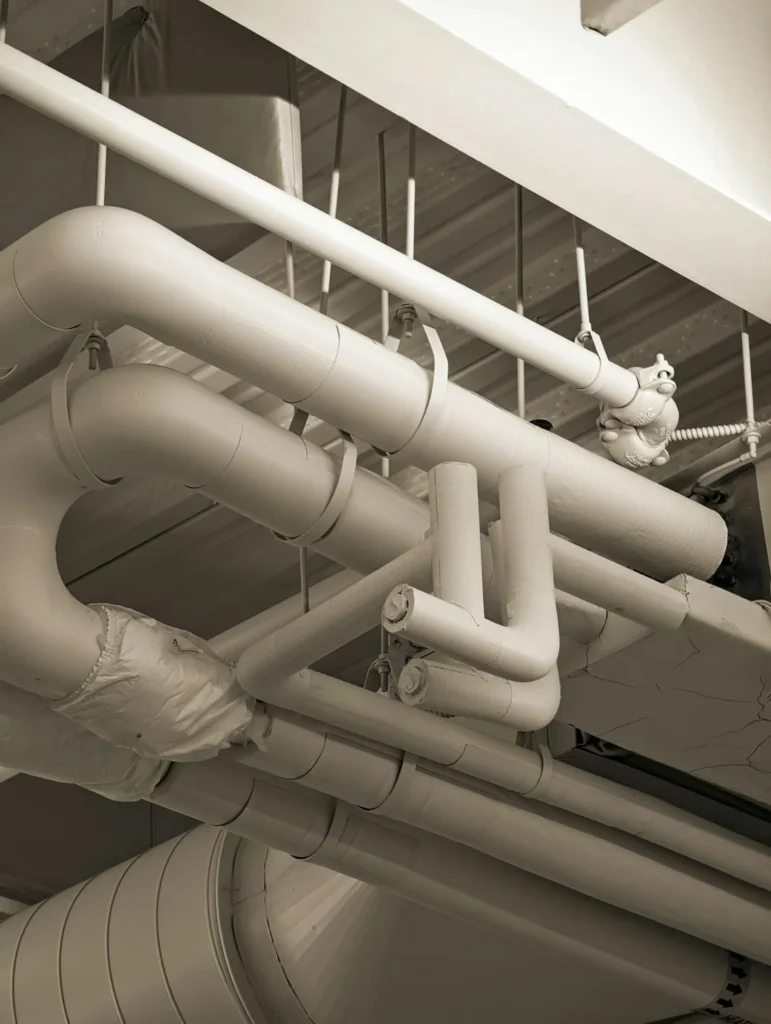Water damage inside a property can be chaotic, ceilings collapse, flooring swells, electrical circuits become unsafe, and mould can begin forming in as little as 48 hours. Yet the most stressful part for many homeowners and property managers isn’t the water itself. It’s dealing with the insurance process.
The outcome of your claim often comes down to how the incident is classified:
Is it classed as escape of water, or flood damage?
The two terms may sound interchangeable, but in the insurance world they represent very different circumstances, liabilities and coverage outcomes. Misunderstanding the distinction can lead to delayed, reduced or rejected claims
Skip to:
What insurers mean by escape of water
What insurers mean by flood damage
Why this distinction matters so much to insurers
What insurers will look for during the claim
How to protect your claim from being rejected
The role of restoration specialists during insurance claims
What a full restoration process typically involves
Understanding costs (and why insurers prefer rapid intervention)
What insurers mean by escape of water
In UK insurance terminology, escape of water refers to water that accidentally escapes from a pipe, appliance, or internal water system. This definition is set out clearly within building and contents insurance policies, and it applies to sudden, unforeseen events rather than gradual deterioration.
Typical causes include:
- A burst pipe during freezing temperatures
- A failed washing machine or dishwasher hose
- An overflowing bath or faulty toilet cistern
- A leaking boiler or central heating system
The Association of British Insurers reports that escape of water is the number one insurance claim type in UK households, costing insurers £2.5 million every single day. This means insurers scrutinise these claims carefully. They will often request proof that the leak was sudden, and not the result of long-term neglect.
A burst pipe after a cold snap is a classic example: the leak is unexpected, the water escape is obvious, and there is an identifiable point of failure.
In general: Escape of water = internal, sudden, accidental.
What insurers mean by flood damage
Flood damage refers to water entering a property from an external, natural source. Insurers define flooding as water that rises from the ground or overwhelms the property due to environmental conditions.
Flooding may be caused by:
- Surface water buildup after heavy rainfall
- Rivers or streams exceeding capacity
- Tidal or coastal flooding
- Groundwater rising and penetrating flooring
Flood damage is significant and expensive to restore. The Environment Agency estimates the average residential flood claim ranges between £30,000 and £50,000. For properties located near rivers or coastlines, flood insurance may be included, excluded or only offered via specialised schemes such as Flood Re.
In general: Flood damage = external, natural, environmental.
Why this distinction matters so much to insurers
The classification determines whether they pay the claim and how much.
Most buildings insurance policies include escape of water as standard. It is an expected domestic risk. However, flood coverage is not universally included.
If a claimant mistakenly describes an internal leak as “flooding”, they can unintentionally trigger a flood-damage review. This leads to questions, additional investigation, and potentially a rejected claim.
Language matters. For example:
Incorrect: “My ceiling is flooded.”
Correct: “Water escaped from a pipe above the ceiling.”
What insurers will look for during the claim
When assessing a claim, insurers want three things:
- Evidence of a sudden incident
- Proof of where the water originated
- Professional validation of the damage
A loss adjuster may visit the property, or the insurer may request a moisture survey and drying report from a restoration contractor. This documentation is critical, because it confirms the volume of trapped moisture, the level of structural saturation and the drying programme required to bring the property back to pre-incident condition.
If there is visible mould, staining that suggests long-term saturation, or corroded pipework, insurers may argue that the incident was gradual and therefore, not covered.

How to protect your claim from being rejected
The most important action is to document everything from the moment the incident is discovered.
Photographs should be taken immediately, especially of the water source and the damage as it progresses. Insurers rely on evidence, and timestamped images help demonstrate that the incident was sudden, not gradual.
Professional moisture mapping further strengthens a claim. At Ideal Response, we use thermal and moisture detection equipment to quantify hidden water movement within floors, walls and structural voids. This data is essential when negotiating with loss adjusters, as it proves the scope of the damage and the required restoration plan.
The role of restoration specialists during insurance claims
While some insurers may recommend or appoint contractors, policyholders are legally entitled to choose their own restoration provider. This is supported by consumer legislation and FCA guidance regarding freedom of contractor choice.
Using an independent restoration company is beneficial because:
- The contractor works on behalf of the property owner, not the insurer.
- Reports and drying programmes are produced to industry standards (BDMA/BESCA).
- There is no incentive to minimise the scope of works to reduce insurer cost exposure.
Professional restoration reduces the likelihood of secondary damage. Mould spores can begin developing within 48 hours, and wet structural timber can warp within days. Delays increase complexity and cost.
What a full restoration process typically involves
Once the water source is isolated, the restoration team will focus on a staged approach.
Restoration stages
- Water extraction: Removing standing water from floors or flooring systems.
- Moisture detection: Identifying hidden water ingress with advanced leak detection.
- Drying system installation: Dehumidifiers, air movers, and controlled heat as part of specialist drying.
- Monitoring and reporting: Moisture level tracking throughout the drying phase.
- Remediation and reinstatement: Returning the property to pre-loss condition. (Please note that Ideal Response do not undertake reinstatement works)
Drying can take anywhere from 3 days to 3 weeks, depending on saturation levels and construction type.
Understanding costs (and why insurers prefer rapid intervention)
Escape of water incidents typically range from £1,500 to £6,000 for full restoration and reinstatement. Flood restoration is more complex and significantly higher due to the contamination risk.
Fast intervention is cheaper for insurers and safer for the property. That’s why many insurers instruct immediate mitigation, even before the claim is formally approved.
When to call a professional water damage company
Professional intervention is needed when:
- The ceiling has visible bulging or sagging
- Water has run through multiple floors
- There is standing water that cannot be removed without equipment
- Electrical circuits may be affected
- You require documentation for insurance
Even small leaks can lead to mould growth (which you’ll need professional mould remediation to resolve) and hidden structural damage if not dried properly.
Final thought: the right terminology protects your claim
When water damage happens, the language you use matters. Insurance providers make clear distinctions:
Escape of water – internal, sudden and accidental (e.g. burst pipe, leaking appliance). Typically covered.
Flood damage – external, environmental water entering the property (e.g. river overflow, storm surge). Only covered if your policy includes flood protection.
Mislabel the incident, and you may unintentionally give your insurer grounds to reject or delay your claim.
If you’re ever unsure, get a professional on site. Independent moisture surveys, photographic evidence and insurance-formatted reports can prevent disputes and speed up approval.
Need professional restoration support?
Ideal Response can handle the entire process from emergency response to damage restoration (not reinstatement):
- 24/7 emergency water extraction
- Moisture surveys and insurance-formatted reporting
- Full structural drying and restoration
Questions? Reach out to our team who will be happy to help.
Have an emergency?
Call our team on 01622 926 505 for immediate advice and same-day support.
FAQs for water damage restoration
What’s the difference between “escape of water” and “flood damage” in UK insurance terms?
According to the Association of British Insurers (ABI):
- Escape of water = Water leaking inside the property (burst pipe, faulty appliance, leaking bathroom).
- Flood damage = Water entering from outside (surface water, river, tidal, storm surge).
Insurers treat them differently. Escape of water is usually included in standard home insurance; flood damage may require specific flood cover, especially in flood-risk zones.
Will my insurance cover escape of water damage?
In 87% of UK home insurance policies (ABI data), escape of water is covered. However, insurers may reject claims if:
- The property hasn’t been maintained (e.g. ignored leaks)
- The heating was not left on during a freeze (common winter exclusion)
- You can’t prove the cause or timeline of the damage
Professional reporting helps avoid disputes.
Is flood damage automatically included in UK home insurance?
No. Flood cover is often optional, particularly in high-risk areas. If you live in a flood-risk zone, your policy may be backed by Flood Re, a joint initiative between the UK government and insurers to keep premiums affordable.
Look for wording like:
- “Storm and flood damage included”
- “Flood Re eligible”
- “Exclusions: surface water flooding”
How long does structural drying take after escape of water or flooding?
Most properties dry within 7–21 days, depending on:
- Volume of water
- Building materials (concrete takes longer than timber)
- Whether professional drying is used
Using dehumidifiers without a moisture survey can trap hidden damp, leading to mould within 48 hours.
Can I clean up water damage myself?
You can mop up visible clean water, but for anything beyond a minor leak, insurers prefer professional drying. Removing water yourself risks:
- Hidden moisture behind walls and floors
- Secondary mould development
- Insurance refusal due to inadequate mitigation
Professional evidence protects your claim.
Do I need a moisture survey for my insurance claim?
Not legally, but it massively increases claim success because:
- It proves the source of the leak (critical to insurer approval)
- It shows exact moisture levels and affected materials
- Insurers rely on evidence, not assumptions
Ideal Response produces insurer-formatted PDF reports accepted by UK loss adjusters.
What should I do first when I find water damage?
1 Turn off the mains water (if internal leak).
2 Document everything such as photos, videos, and timestamps.
3 Call your insurer, use the wording “escape of water” if it’s internal.
4 Request professional remediation. Insurers expect you to prevent further damage.
Tip: Never say “flooding” unless it came from outside — one word changes your claim classification.
Will my insurer send a drying company?
Not always. Many insurers now ask homeowners to arrange their own contractor, then reimburse costs.
Choosing your own contractor also avoids delays, some loss adjuster-allocated drying teams have 2 – 6 week wait times during winter bursts.

Chris Hedges - Head of Marketing
With over 25 years' experience, Chris is adept at defining and driving strategy, while also enjoying hands-on operational delivery. He believes in an equal blend of creativity and analytical scrutiny, always finding inventive ways to achieve objectives, underpinned by evidence. Chris’s philosophies are simple: don't overcomplicate, always prioritise customer experience, and bend the rules just enough to cut through the noise and drive momentum and growth.





















